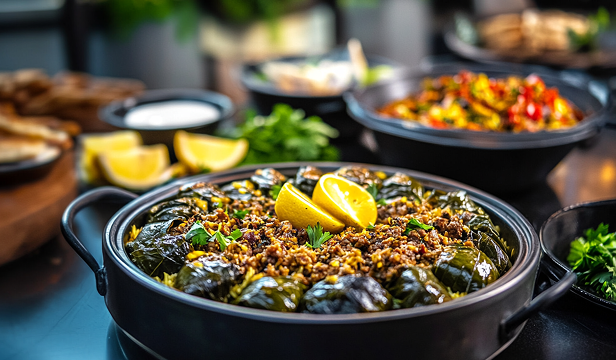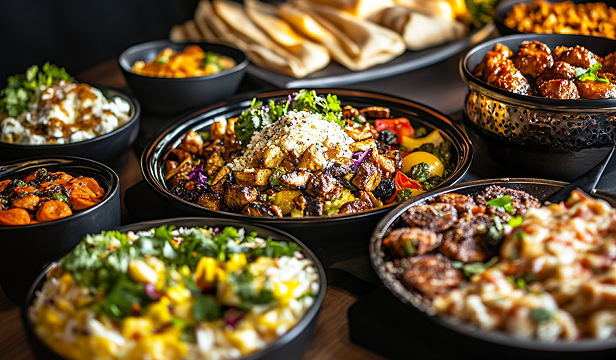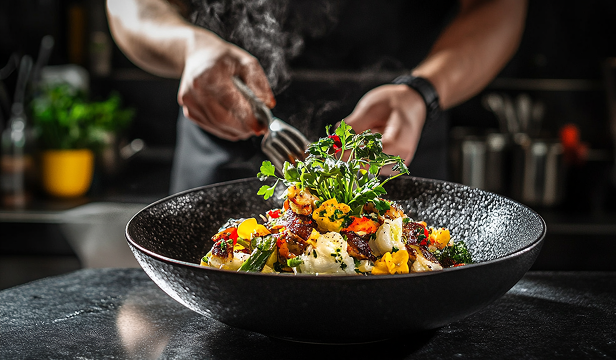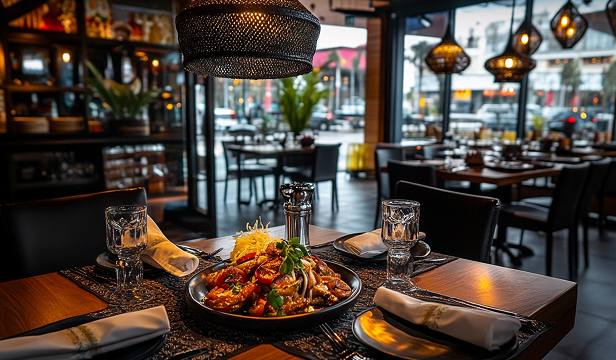Introduction Middle Eastern art is renowned for its intricate patterns, rich colours, and deep cultural…

Showcasing Handmade Middle Eastern Pottery in Restaurants
Introduction
Handmade Middle Eastern pottery is a timeless art form that embodies the rich cultural heritage and craftsmanship of the region. By incorporating these exquisite ceramics into restaurant settings, establishments can enhance the dining experience, create a unique ambiance, and celebrate the artistry of traditional pottery-making.
The Significance of Middle Eastern Pottery
Middle Eastern pottery dates back thousands of years, with influences from Persian, Ottoman, and Islamic art. The intricate patterns, vibrant glazes, and hand-thrown techniques make each piece a one-of-a-kind work of art. The use of these ceramics in restaurants connects diners to the region’s history and cultural identity.
Key features of Middle Eastern pottery include:
- Geometric and Floral Motifs: Inspired by Islamic art, these patterns are deeply symbolic and visually striking.
- Rich Colour Palettes: Common hues include deep blues, turquoise, earthy tones, and golden accents.
- Handcrafted Techniques: Traditional pottery is shaped by hand and fired in kilns, resulting in unique textures and finishes.
Enhancing the Dining Experience with Handmade Pottery
The use of authentic, handmade pottery in restaurants adds depth and character to the dining experience. Benefits include:
- Elevated Aesthetics: Beautiful ceramic plates, bowls, and serving dishes enhance food presentation, making each dish more visually appealing.
- Cultural Storytelling: Showcasing handmade pottery educates diners about Middle Eastern traditions and craftsmanship.
- Tactile Connection: The texture and weight of handcrafted ceramics provide a more immersive sensory experience compared to mass-produced tableware.
- Sustainability and Authenticity: Many handmade pottery pieces use natural materials and traditional firing methods, aligning with eco-conscious dining trends.
Integrating Pottery into Restaurant Decor
Beyond tableware, handmade pottery can be seamlessly integrated into the overall restaurant aesthetic:
- Wall Displays: Arranging ceramic plates and tiles on walls as decorative elements.
- Pottery Lighting Fixtures: Handcrafted ceramic lanterns and lamps to create warm, ambient lighting.
- Serving Stations: Clay pots and vases as part of buffet or open kitchen displays.
- Custom Branding: Restaurants can commission bespoke pottery pieces featuring their logo or thematic designs.
Notable Restaurants Using Handmade Middle Eastern Pottery
Many high-end and boutique restaurants embrace handcrafted ceramics to create a distinctive dining experience. Examples include:
- Shababeek (UAE): Known for its intricate tilework and use of traditional Levantine ceramics.
- Comptoir Libanais (UK): Blends Middle Eastern decor with vibrant hand-painted ceramic serving ware.
- Mosaic (Jordan): A fine dining establishment incorporating pottery inspired by ancient Jordanian mosaics.
Supporting Local Artisans
Restaurants that showcase handmade Middle Eastern pottery also contribute to the preservation of traditional craftsmanship by sourcing pieces from local artisans. Collaborations between chefs and potters lead to custom-designed tableware that enhances the authenticity of the dining experience.
Ways to support artisans include:
- Partnering with local pottery workshops to create exclusive collections.
- Hosting pottery exhibitions within restaurant spaces.
- Educating customers about the origins and significance of the ceramics used in service.
Conclusion
Incorporating handmade Middle Eastern pottery in restaurants is more than just an aesthetic choice—it is a tribute to cultural heritage, craftsmanship, and sustainable design. Whether through tableware, decor, or collaborative artistry, these ceramics add an unmatched authenticity to dining experiences, ensuring that every meal is not only a feast for the palate but also a celebration of tradition and artistry.



